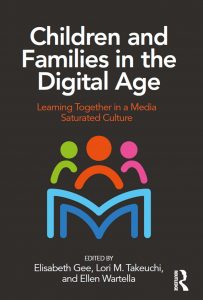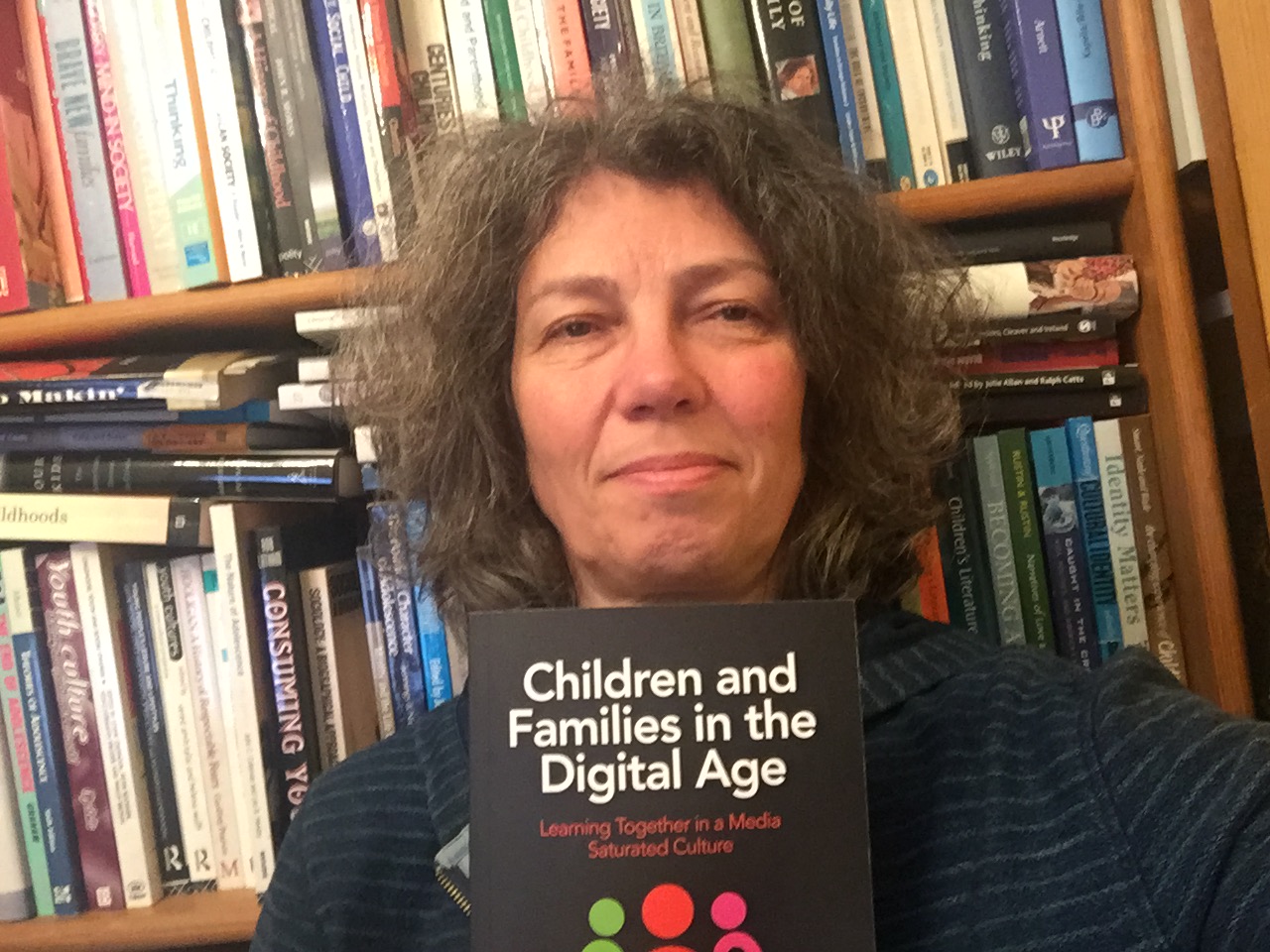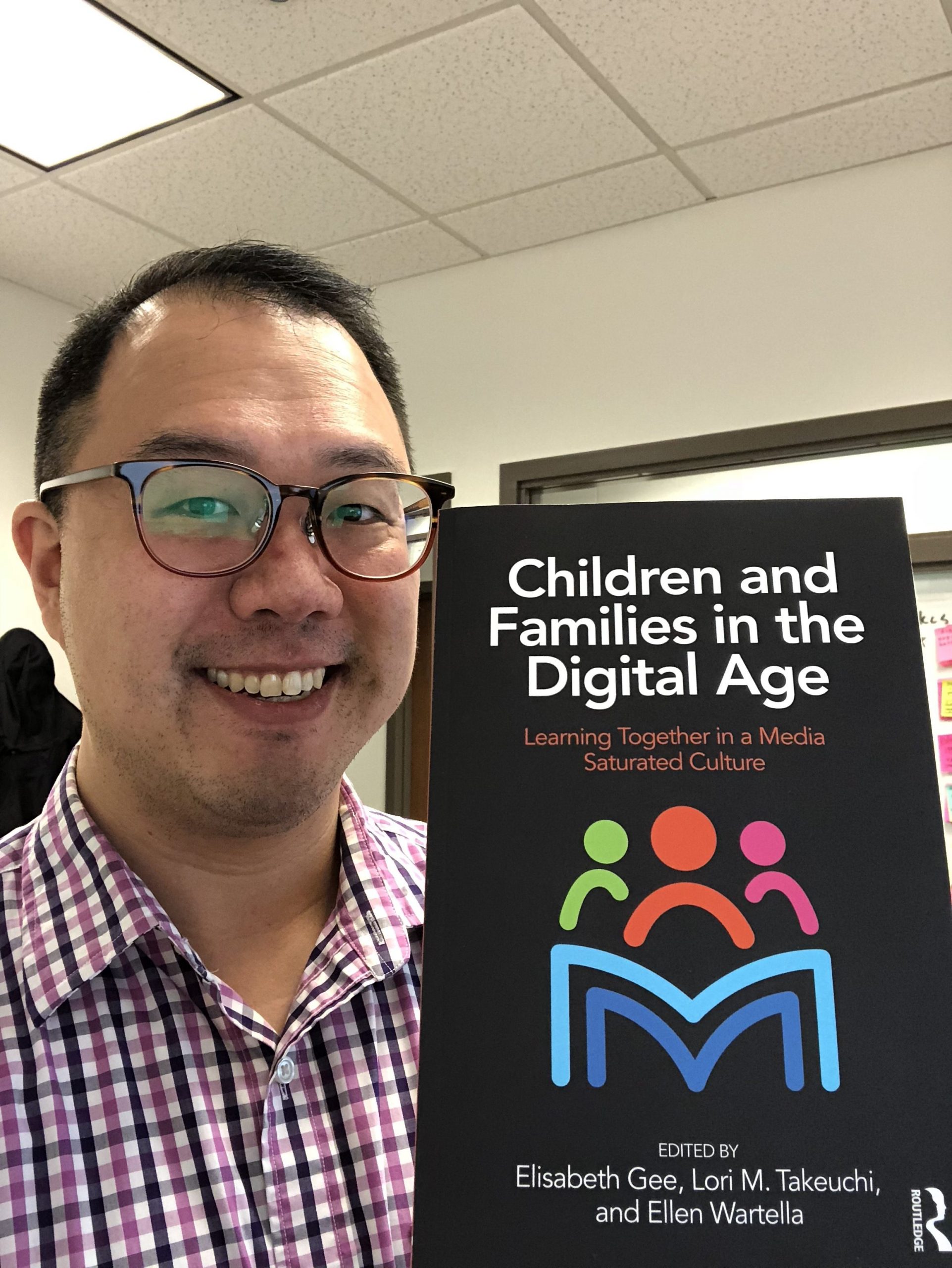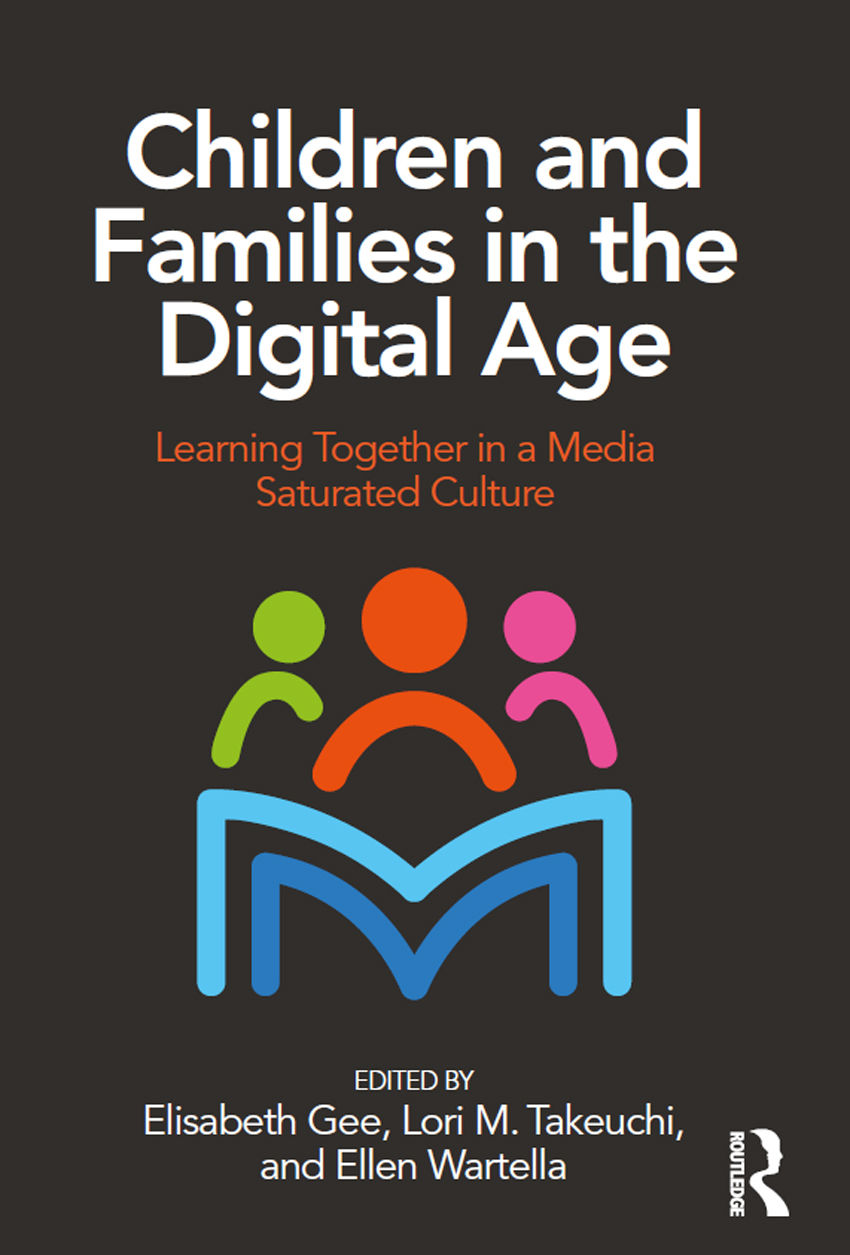
We’re thrilled to announce the publication of Children and Families in the Digital Age: Learning Together in a Media Saturated Culture, edited by Elisabeth Gee, Lori Takeuchi, and Ellen Wartella. The book is based on research conducted by the Families and Media Project (FAM), a multi-disciplinary consortium comprised of researchers from the Joan Ganz Cooney Center at Sesame Workshop, Arizona State University, California State University-San Marcos, Northwestern University, Rutgers University, Stanford University, Sesame Workshop, and the University of Washington.
Members of the FAM consortium have collaborated across institutions and disciplines with a common goal of producing research to guide practitioners—including educators, policymakers, and media producers—in developing programs, policies, and products that:
- Positively impact the learning, communication, and lifestyle needs of families with children;
- Support family engagement with media—in real-time and asynchronously—by taking advantage of technological affordances that may overcome the various challenges of using media together;
- Better address the needs of today’s families, including single-parent households, non-native speakers, and parents with demanding work schedules;
- Help families be smarter media consumers and wiser in their content selections; and
- Improve education, promote healthy lifestyles, and positively influence family development outcomes.
The studies documented in Children and Families in a Digital Age offer fresh perspectives grounded in large-scale survey research as well as in-depth ethnographic studies of how families with children ages 2-12 use media. These families come from a wide range of racial, ethnic, and socioeconomic backgrounds, but a majority of the studies represented in this volume focus on Hispanic-Latino families.
The editors outline four practical applications for this book. First, the studies offer insights for educators interested in supporting connected, interest-driven learning experiences that motivate young learners.
In particular, this research suggests the critical role of parents, siblings, and other family members in helping children identify and explore these interests, make connections across potentially disparate learning experiences, and resolve issues and barriers to using media to pursue these interests. Indeed, while discussions of interest-driven learning often focus on individual interests, a number of our chapters indicate how shared interests among family members can be focal points for collaborative, social learning activities.
Second, the authors stress the importance of enhancing connections between home and school media use and learning. Educators can benefit from understanding parents’ perceptions of digital media, as well as understanding how students’ families use media at home.
For example, children are taking on roles as teachers, information brokers, and gatekeepers for their siblings and parents, yet the skills they develop and the demands that they face frequently go unrecognized by teachers as opportunities for learning. In particular, understanding families’ out-of-school use of media and digital technologies may help educators to develop more expansive notions of digital literacies and learning activities that go beyond typical school-oriented or workplace-oriented tasks.
Third, the authors describe forms of joint media engagement that go far beyond how we have typically conceptualized such engagement, suggesting benefits for media designers as well.
Joint media engagement occurs, for example, in the process of troubleshooting media-related problems and can extend to asynchronous interactions over time and space (Chapter 4). Recognizing and designing for these more diverse forms of joint media engagement, as well as supporting parents in taking full advantage of such opportunities for learning, are valuable tasks for designers as well as educators.
And finally, the book offers implications for supporting parents’ learning through and about media and digital technologies.
Our findings indicate how actively parents are involved in navigating the rapidly evolving media landscape, seeking information, resources, and support while trying to align new media practices with their values, parenting approaches, and the perceived needs of their children and families. All parents need assistance in sorting through the wide range of often conflicting opinions and evidence about digital media’s potential for learning and other positive outcomes, and many parents do not feel confident about their ability to make informed decisions about their family’s media access and practices.
We hope that you will find these chapters as illuminating and insightful as we do! The paperback version is available for pre-order on Amazon, or you can purchase the Kindle version now. Be sure to follow us on Twitter and Facebook for opportunities to win paperback copies of the book.




